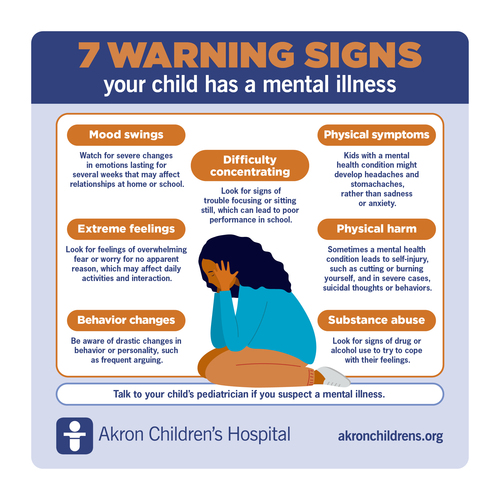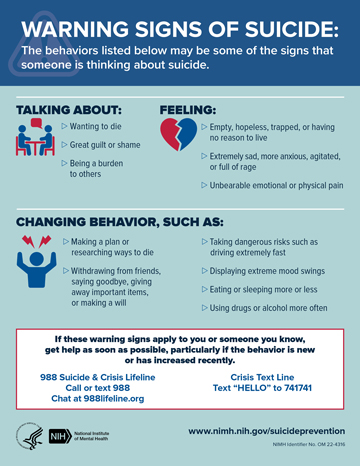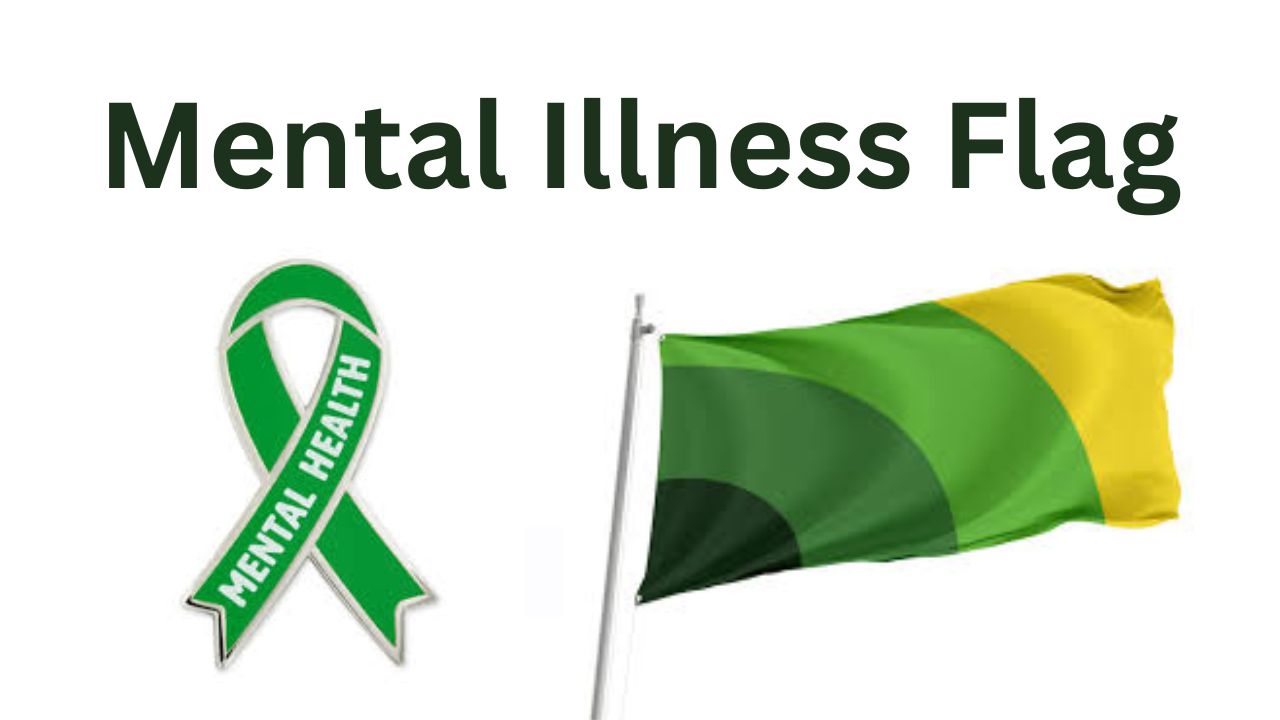A Mental Illness Flag is a symbolic representation to spread awareness about mental health issues. It is often used during campaigns to support those affected.
Mental health is an integral part of our well-being, yet it frequently goes unaddressed due to stigma and lack of understanding. Raising awareness through symbols like the Mental Illness Flag helps in destigmatizing mental health conditions, promoting conversation, and encouraging individuals to seek help.
Typical depictions of the flag may include a green ribbon, which signifies mental health awareness. Society increasingly recognizes the importance of psychological and physical health as part of a holistic approach to healthcare. Awareness campaigns utilizing the Mental Illness Flag are crucial in creating supportive communities where individuals can openly discuss their struggles and access the help they need without fear of judgment.
The Spectrum Of Mental Health
Imagine mental health as a rainbow. Within it, countless shades represent different experiences. Some people enjoy consistent, clear skies. Others might face storms. This broad spectrum varies from one person to another, highlighting why understanding mental health is crucial.
Defining Mental Illness
Mental illness includes various conditions affecting our thoughts, feelings, and acts. Professionals diagnose them based on specific criteria. These conditions range from depression to anxiety, bipolar disorder to schizophrenia. Just like physical illnesses, they require appropriate care and treatment.
Differentiating Between Mental Health And Mental Illness
Mental health and mental illness are not two sides of the same coin. Mental health is how we cope with daily life and its challenges. It’s about feeling good mentally and emotionally. Think of it as maintenance for your mind.
Conversely, mental illness is a medically diagnosable condition. It’s when one’s mental state significantly disrupts daily functioning.
Look at mental health on a continuum:
| Good Mental Health | Poor Mental Health | Mental Illness |
|---|---|---|
| High energy levels | Frequent stress | Clinical Depression |
| Positive self-esteem | Low confidence | Generalized Anxiety Disorder |
| Strong coping skills | Difficulty managing emotions | Post-Traumatic Stress Disorder |
Both concepts are crucial for a well-rounded conversation about our well-being. Recognizing the difference leads to better support and more effective treatments.
Early Indicators Of Potential Mental Illness
Spotting the early signs of mental illness helps with early care. It can be tricky to notice. Yet, knowing what to look for makes a huge difference. Let’s explore critical early indicators.
Emotional Warning Signs
- Feelings of sadness or low mood that last long
- Unexpected mood changes, ranging from rage to euphoria
- Increased sensitivity to sights, sounds, smells, or touch
- Signs of worry or fear that seem out of place
- Less interest in favorite activities
Behavioral Shifts And Patterns
| Behavior Changes | |
|---|---|
| Withdrawal | Avoiding friends, family, and social activities |
| Sleep Patterns | Sleeping too much or too little |
| Diet and Appetite | Changes in eating habits; sudden weight gain or loss |
| Daily Functioning | Struggle with daily tasks at work, school or in caring for oneself |
| Substance Use | Increased use of alcohol or drugs |
Physical Symptoms Not To Ignore
Mental illness often wears a mask, hiding its presence through emotional distress. But it doesn’t stop there. Physical symptoms play a crucial role as silent signals of underlying mental stress. Ignoring these symptoms might lead to their silent growth. Being aware and responding to our body’s distress calls can uncover hidden mental health battles. Let’s explore some key physical signs you should never overlook.
Changes In Sleeping Or Eating Habits
A good night’s sleep and regular meals fuel our body’s needs. But when mental health wanes, these primary patterns warp. Here’s what to stay alert for:
- Insomnia or oversleeping – drastic changes in your sleep length
- Lack of appetite or overeating – significant shifts in eating habits
| Sign | Possible Meaning |
|---|---|
| Sleepless nights | Anxiety or depression |
| Excessive sleep | Depressive episodes |
| Sudden weight gain/loss | Emotional distress |
Consistent detection of these changes warrants a conversation with a healthcare provider.
Unexplained Aches And Pains
Mental illness doesn’t always shout; sometimes, it whispers through persistent physical discomfort. Here are common complaints:
- Headaches – recurring and intense
- Muscle soreness – without clear physical cause
- Stomach issues – like nausea or butterflies
These aches could be your body’s alarm system. Regular occurrence of such pains hints at stress or depressive disorders. Never dismiss them as just another lousy day.
Cognitive Clues: Thoughts And Perceptions
Mental Illness often leaves traces in how we think and perceive the world.
Cognitive clues are like secret codes that tell us our mind needs attention.
These signs show in our focus, thoughts, and understanding of life around us.
Difficulty Concentrating
Have you ever tried to focus, but your thoughts feel like a TV is stuck on channel surf?
That’s what difficulty concentrating can feel like.
It’s a common sign that our brain is having trouble.
- Fuzzy thinking makes tasks hard.
- Details slip away like sand through fingers.
- Work and study can feel like climbing a mountain.
Persistent Negative Thoughts
Sometimes, our minds get stuck in a loop of sad or scary thoughts.
This is what we mean by persistent negative thoughts.
It’s like a dark cloud that won’t go away.
Here are some signs:
| Sign | Explanation |
|---|---|
| Worrying non-stop | Overthinking about what could go wrong. |
| Self-criticism | Feeling not good enough, often. |
| Hopelessness | Feeling like things will never get better. |
If you spot these clues in your thoughts, it might be time to reach out for help.
Social Warnings: Interaction And Relationships
Understanding mental illness requires attention to changes in how people interact. Friends and family often notice these changes first. Social warnings are essential for early support. Let’s explore signs like isolation and increased conflict.
Isolation And Withdrawal
Isolation happens silently.
- Decline in social invites and gatherings.
- Excuses to avoid friends increase.
- Changes in activity levels are noticeable.
- Hobbies and interests fade away.
Withdrawal is a clear sign. Loved ones seem to vanish from social scenes. It raises concerns. Withdrawal affects all age groups. Young or old, it can signal inner turmoil.
Conflict Increases With Peers And Family
Family ties suffer.
Arguments become common. Trivial matters escalate quickly—tensions at home soar.
Peer relations strain.
| Before | After |
|---|---|
| Happy interactions | Frequent disputes |
| Joint problem-solving | Blaming others |
| Understanding | Miscommunication |

Credit: www.akronchildrens.org
Evolving Self-perception And Self-harm
Our self-image changes as we go through life. A healthy view of ourselves is key to happiness. But some struggle with self-esteem. This can lead to self-harm. Understanding the signs is vital.
Low Self-esteem Development
Low self-esteem often starts early. It can come from many sources. It’s like a shadow that grows with time. Kids might feel less worthy than others. They may think they don’t measure up. This can stick with them.
- Critical comments from family
- Bullying at school
- Feeling different from peers
Building positive self-esteem is like planting a garden. It needs care and the right environment. Encouragement can help it grow.
Indicators Of Self-harming Behavior
Self-harm is a cry for help. It’s essential to know the signs:
| Sign | Meaning |
|---|---|
| Unexplained cuts | Physical injury on one’s body |
| Isolation | Staying alone more than usual |
| Wearing long sleeves | Even in hot weather to hide marks |
Addressing self-harm means finding the cause. It’s about helping the person find healthier ways to cope.
Substance Use And Mental Illness
Mental illness often collides with substance use. Each affects the other. Understanding this connection can help tackle them better. This part dives into the links between increased substance consumption and how it might be a coping mechanism for some individuals.
Increase In Substance Consumption
Recent times have witnessed a significant rise in substance use. Professionals show concern for its impact on mental health. Various studies link high substance intake to new or worsening mental illnesses.
- Alcohol sales soar; it might reflect stress in society.
- Drug prescriptions and illegal drug use also climb.
Substance Use As A Coping Mechanism
People sometimes turn to substances to deal with life’s struggles. It looks like a quick fix.
| Substance | Reason For Use |
|---|---|
| Alcohol | To relax or sleep better |
| Cannabis | To escape problems |
| Opioids | To numb emotional pain |
However, this sometimes leads to a vicious cycle. The more they use, the more they hurt. This pattern is complicated to break without proper help.

Credit: threadsofanxiety.com
When To Seek Professional Help
Understanding the right time to seek help is a vital step in managing mental health. Mental illness can be subtle or severe, but knowing when to reach out for professional support can make a significant difference. Under the subheading When to Seek Professional Help, let’s examine two critical aspects: Assessing Severity and Frequency and Navigating Mental Health Services.
Assessing Severity And Frequency
Mental health issues can vary. Recognize severity by noting how symptoms affect daily life. Do feelings of sadness stop you from going out?
Do fears prevent you from doing what you love? Reflect on these questions. If symptoms are intense or last a long time, help is necessary.
Frequency also matters. A bad day can happen to anyone. But if bad days are most days, it’s time to act. Keep a diary or use an app to track moods and thoughts. Spot patterns over time.
Navigating Mental Health Services
Knowing how to find the right services is crucial. Start by talking to a family doctor. They guide you to a mental health professional. Mental health services include therapists, counselors, and psychologists.
Insurance often covers mental health. Check your plan for details. If uninsured, search for local community health centers. They usually have sliding scale fees based on income. Online directories list local services, too.
| Step | Action |
|---|---|
| 1 | Consult primary care doctor for referral |
| 2 | Review insurance or other coverage options |
| 3 | Use resources like directories for local services |
| 4 | Consider community health centers for affordability |
- Always talk to someone you trust about how you feel.
- Realise that asking for assistance is a sign of strength rather than weakness.
- Remember that treatment can lead to a happier, healthier life.
Support Systems And Prevention
Talking about mental health is challenging. A strong support network may save a person’s life. Support systems and prevention are crucial to handling mental health issues. They offer a safety net and ways to stop problems before they start.
Building A Network Of Support
Creating a network of support is crucial. Family, friends, and healthcare professionals join to offer help and understanding.
- Stay in touch with loved ones.
- Join local support groups.
- Find online communities for shared experiences
- Keep regular appointments with therapists
Remember, a simple conversation can brighten a dark day. Connection is key.
Preventative Measures And Strategies
Preventative strategies help manage mental well-being. They can stop minor issues from growing.
- Practice self-care regularly
- Stay active with exercise
- Get enough sleep
- Eat a balanced diet
- Limit alcohol and avoid drugs
- Learn stress management techniques
Mental health days are not lazy. They recharge your mind. Make prevention a priority.
Debunking Myths Around Mental Illness Flags
When talking about mental health, myths can be harmful. This section helps uncover truths and dismiss false beliefs about mental illness flags. Understanding these aspects is critical for support and empathy.
Common Misconceptions
Many misconceptions swirl around mental illness. People often get the wrong idea about what signs to watch for. Let’s clear up some myths:
- Mental illness is rare: In fact, these conditions are more common than you might think.
- Lousy parenting causes it: Mental illness can affect anyone, regardless of upbringing.
- People can snap out of it: This is not a choice; it’s a health condition that needs care.
Truths About Mental Health Warning Signs
Warning signs can often go unnoticed. Recognizing them can lead to early intervention and better management. Here are truths about mental health flags:
| Warning Sign | What It Means |
|---|---|
| Changes in Sleep Patterns | This could indicate depression or anxiety |
| Loss of Interest in Activities | Possibly a sign of various mental health issues |
| Withdrawal from Social Situations | Often seen in individuals struggling with mental illness |
Remember, knowledge fights stigma. Recognition of genuine mental health warning signs is crucial. It leads to supportive conversations and appropriate help.

Credit: www.nimh.nih.gov
Frequently Asked Questions For Mental Illness Flag
What Are The 7 Types Of Mental Disorders?
The seven types of mental disorders include anxiety disorders, mood disorders, psychotic disorders, eating disorders, trauma-related disorders, substance abuse disorders, and personality disorders.
What Are The Red Flags For Mental Illness?
Red flags for mental illness include persistent sadness, excessive fears or worries, extreme mood changes, social withdrawal, and dramatic changes in eating or sleeping habits. Unexplained physical ailments and substance abuse can also signal mental health issues.
What Is The Hardest Mental Illness To Live With?
Determining the most complex mental illness to live with is subjective, as individual experiences vary greatly. Factors include the severity, personal coping mechanisms, and available support systems. Schizophrenia and treatment-resistant depression often rank as particularly challenging due to their profound impact on daily functioning and well-being.
What Are The 4 Types Of Mental Health?
The four types of mental health are mood disorders, anxiety disorders, personality disorders, and psychotic disorders. Each type encompasses various conditions that impact mental well-being.
Conclusion
Recognizing the signs of mental illness early can be life-changing. With awareness and support, individuals can seek help and start their journey to recovery. Embracing empathy and promoting education are vital. Let’s pledge to stay vigilant and compassionate for those facing these invisible battles.
Your role can make a real difference.

Hello there! I’m here to assist you with health tips and tricks. Whether you’re looking to boost your energy, improve your sleep, or enhance your overall well-being, I’m here to guide you with strategies and frameworks that can empower you to make positive changes.
First and foremost, it’s important to understand that health is a holistic concept encompassing various aspects of physical, mental, and emotional well-being.

